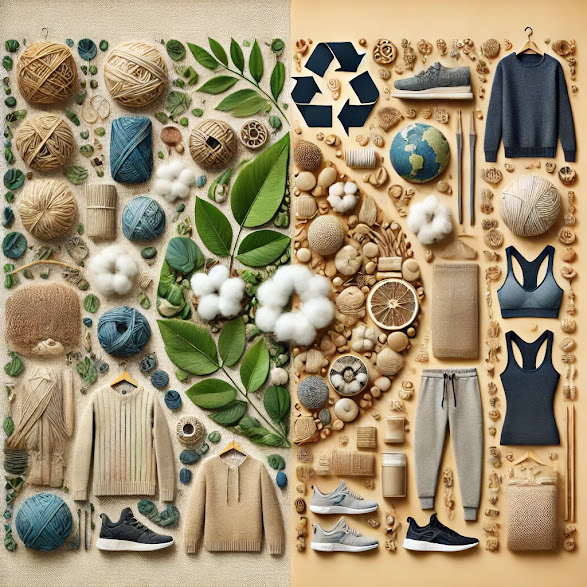Natural vs. Synthetic Fabrics: Sustainability and Usage Explaine
Natural Fabrics: Timeless and Biodegradable
Natural fibers like cotton, wool, and silk are celebrated for their comfort, breathability, and biodegradability. They are derived from renewable sources such as plants and animals, making them eco-friendly choices in theory.
 |
| Natural Fibers or Synthetic Fibers Pros and Cons |
Pros:
- High breathability and moisture absorption.
- Biodegradable when free of synthetic additives.
- Comfortable and soft textures.
Cons:
- Resource-intensive production (e.g., high water use for cotton).
- Prone to shrinkage, wrinkles, and pest damage.
Recycling natural fabrics is straightforward; they can be shredded into fibers for reuse or turned into rags, insulation, or paper.
Synthetic Fabrics: Durable but Persistent
Synthetic fabrics like polyester, nylon, and spandex are created through chemical processes, often from nonrenewable petroleum-based resources. While these fabrics are durable and affordable, their environmental footprint is significant.
Pros:
- Highly durable and resistant to wear.
- Quick-drying and wrinkle-resistant.
- Ideal for activewear and outdoor gear.
Cons:
- Non-biodegradable, contributing to microplastic pollution.
- Energy-intensive production process.
Recycling synthetic fabrics involves chemical or mechanical processes to create new fibers. For instance, polyester can be transformed into rPET (recycled polyester), commonly used in sportswear.
Recycling, Upcycling, and Repurposing Ideas
Whether natural or synthetic, all fabrics deserve a second life. Here are some ideas:
- Recycling: Donate old clothes to organizations that repurpose textiles or invest in fabric recycling programs.
- Upcycling: Turn old cotton T-shirts into reusable cleaning rags or transform synthetic activewear into tote bags.
- Repurposing: Use natural fabric tablecloths as curtains or synthetic materials as durable garden covers.
Sustainability Insights
The true sustainability of a fabric depends on how it’s produced, used, and discarded. For example:
- Natural fabrics, when grown organically and dyed naturally, are better for the planet.
- Synthetic fabrics made from recycled materials reduce dependence on virgin petroleum resources.
Making informed choices and supporting sustainable brands can help reduce the environmental impact of textile production and consumption.
Conclusion
Understanding the differences between natural and synthetic fabrics empowers you to make sustainable choices in your wardrobe and home. By prioritizing recycling, upcycling, and repurposing, you contribute to a circular economy that values creativity and conservation.
Let your fabric choices reflect not only your style but also your commitment to a more sustainable future.









Comments
Post a Comment